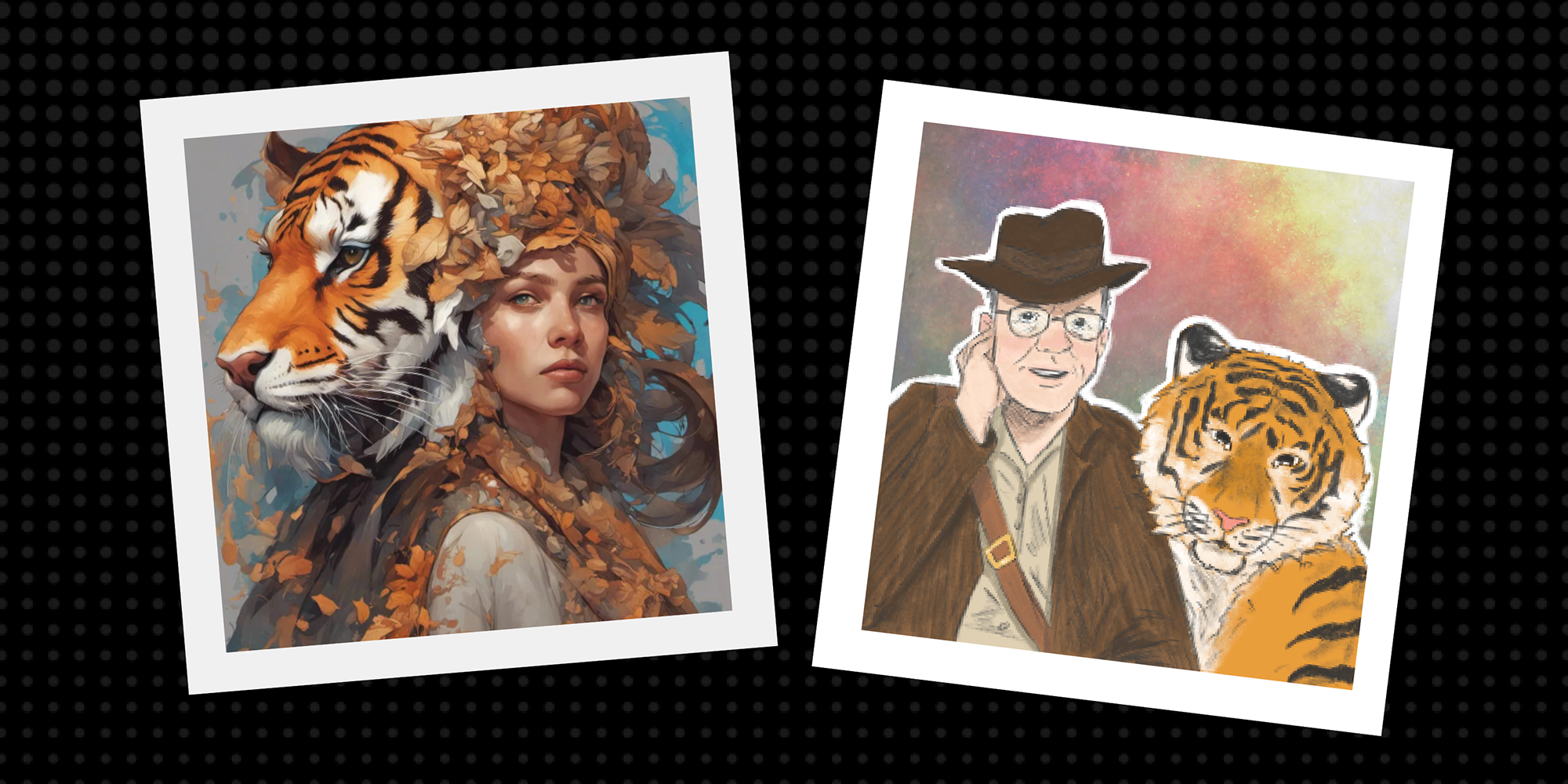Artists are constantly ripped off of their authentic work, from museum robberies to non-fungible tokens and, now, art generated by artificial intelligence (AI). It is no secret that the creative industry is competitive and pays next to nothing, so why are artists being targeted? While many people are excited about the development of AI art, others are scared about what it means for the future of their careers.
AI Analysis
As worried as artists are about AI, some are eagerly researching its applications and trying to discover everything it has in store. James "Jim" Porto, an RIT alum and assistant professor in the School of Photographic Arts and Sciences, talked about what he has discovered through his experimentation with AI.
“If all that mattered was the result ... it’s a good result,” he started. “Working with it, though, is profoundly unsatisfying.”
With over 30 years of experience using manipulated photography,
“AI does what I was doing so much quicker, so much better ... but you don’t have as much control," Porto said. "I’m really glad I’m not competing as a photo illustrator right now.”
Wil Gross, a third year New Media Design student, had a similar thought.
“I think art for the sake of art is garbage ... there is no human impression, and that’s what art is about,” Gross stated.
Rip-off or Resourceful?
Artists, professors and students alike are all navigating the balance between when and how to use
For instance, the "Retype (Beta)" tool in Illustrator allows editors to paste an image with typography and provides the closest font match. Another example is the "Remove" tool in Photoshop, which lets users brush over unwanted content with a similar replacement.
"Art has meaning behind it," noted Sam Cazer, a second year New Media Design student. "Only a human can create art, but AI will be another tool that artists or designers use."
Many students have already begun to explore and experiment with this new piece of technology, finding ways that it could help them, instead of hurt them.
“I prefer to use AI to enhance my projects,”
Fear of the Future
Implementing AI as a tool proves resourceful when trying to make workflow more efficient, but this becomes controversial when using it in place of the work. This is where the fear of AI replacing artists' jobs starts. Porto and Cazer both mentioned how there was fear historically with the advent of photography.
Painters were scared that photographers were going to take over their industry, but that never happened. Instead, painting and photography became their separate mediums, which is what Porto believes will happen with AI.
"It's going to be its own medium," he stated. "It's going to have the same market share, though. [AI] steps on the toes of photo illustrators."
Using AI as a tool proves to be resourceful when trying to make a workflow more efficient, but using it in place of the work is where controversy can arise, which This is where the fear of AI replacing people’s jobs stems from. Porto and Cazer both expressed how this behavior happens historically with photography. Painters were scared that
“It’s another medium…it going to be its own medium,” he stated. “It's going to have the same market share, though. [AI] steps on the toes of photo illustrators.”
This gets into what makes people afraid — how far is too far? AI is quick and efficient, and if it can create the same type of work photo illustrators and designers make, why hire someone else to do the work?
Although it can be helpful, many artists are facing the reality of what their future careers may look like with the integration of AI. Jennifer Zhang, a fourth year Graphic Design student, talked about her fears with AI.
“As a graphic design major, I’m worried about AI taking over and there are not as many jobs," Zhang said. "Using [AI] will be super easy to do and the positions for a company might be taken by [it].”
Silver Linings Ahead?
With all that said, people are finding ways to make really cool, unique art with AI. Artists on Instagram, including
So what does this mean? Are the creations they have made with AI truly their work? It is really hard to say, and as of now,
But with the growing popularity of AI, we may start to see an increase in traditional art forms, such as photography and illustration. Despite the ease and accessibility of AI, it cannot create the same value of work that a human can, no matter how advanced it is. AI cannot capture the real moments, nor can it create the physical texture that oil paintings and charcoal drawings have.
People still care and appreciate the hard work that artists do to express their craft, and with the inauthenticity of AI artwork, that appreciation and value is just going to increase. Although realistic, AI simply cannot match the human element of artwork.
As Porto stated, “there’s a deadness to it, there’s a lack of soul, something off about it ... but it’s amazing.”








